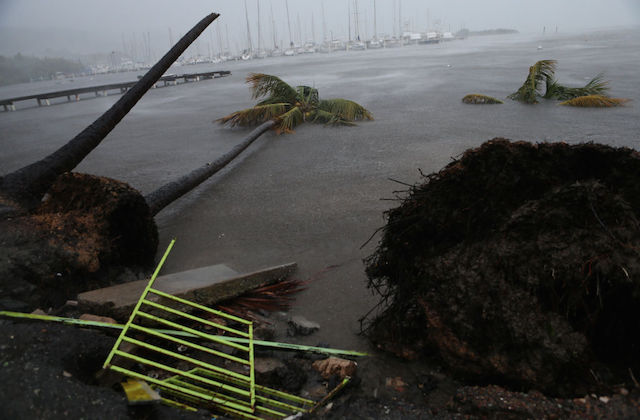Two weeks after Hurricane Harvey made landfall, there are currently four hurricanes in the Atlantic Ocean. In a new article, Inside Climate News attempts to answer the question that is popping up on countless social media feeds: Is all of this hurricane activity the result of global warming?
The article, “6 Questions About Hurricane Irma, Harvey and Climate Change” was published yesterday (September 6), and it explores how global warming contributed to the nine trillion gallons of rain that fell on the Houston region, why climate change is behind a more intense than normal hurricane season and what distinguishes Harvey and Irma from other storms. From the article:
Now, halfway through the season, Hurricane Harvey’s destruction stretches along the Texas coast, Hurricane Irma is hitting islands in the Caribbean with record wind speeds as it heads toward Florida, and two more named storms—Jose and Katia—have grown to hurricane strength.
As global temperatures continue to rise, climate scientists have said this is what we should expect—more huge storms, with drastic impacts.
Each hurricane has an individual set of factors that influences its intensity and path, meaning it is difficult for scientists to know specifically how climate change affects a particular storm. Yet, there are known connections:
What scientists who study hurricanes are confident in, though, is the underlying physics that show that warmer temperatures are among the factors changing the way that storms form.
According to the 2014 National Climate Assessment, the intensity, frequency and duration of North Atlantic hurricanes have increased since the early 1980s. The frequency of the strongest storms—category 4 and 5 hurricanes—has increased too.
In addition, climate change not only impacts the wind intensity of storms, but it also influences the amount of rain. The article reports, “Warmer air also retains more water vapor, which can result in dramatic rainfall like what happened during Hurricane Harvey.”
Climate deniers have argued there has been what they call a "hurricane drought," citing as evidence that a storm of Harvey’s intensity had not hit the U.S. in 12 years. The article includes interviews with scientists and climate experts who point out that while that may be true, there have been a number of storms that have brought devastating flooding, property damage and loss of life in that time:
"Tell the people of coastal Texas that Ike was not a major hurricane," said Emanuel, the MIT scientist. "Well, Ike was technically just under the ranking of major hurricane, and it completely destroyed a huge part of coastal Texas. Now, tell the people of New York that Sandy wasn’t a major hurricane."
"There were plenty of hurricanes in that stretch of 12 years," he said. "They just didn’t happen to make landfall as strong storms in the United States."
As Irma continues to move through the Caribbean and is forecast to hit Florida this weekend, the storm’s biggest threat is the sustained, high winds it could bring, which are projected to be upwards of 185 mph. And the article explains another climate change-related factor that makes this particular storm so severe: "Riding on top of sea levels that have risen due to climate change, Irma’s surge could be particularly dangerous."
Read the entire article here.
